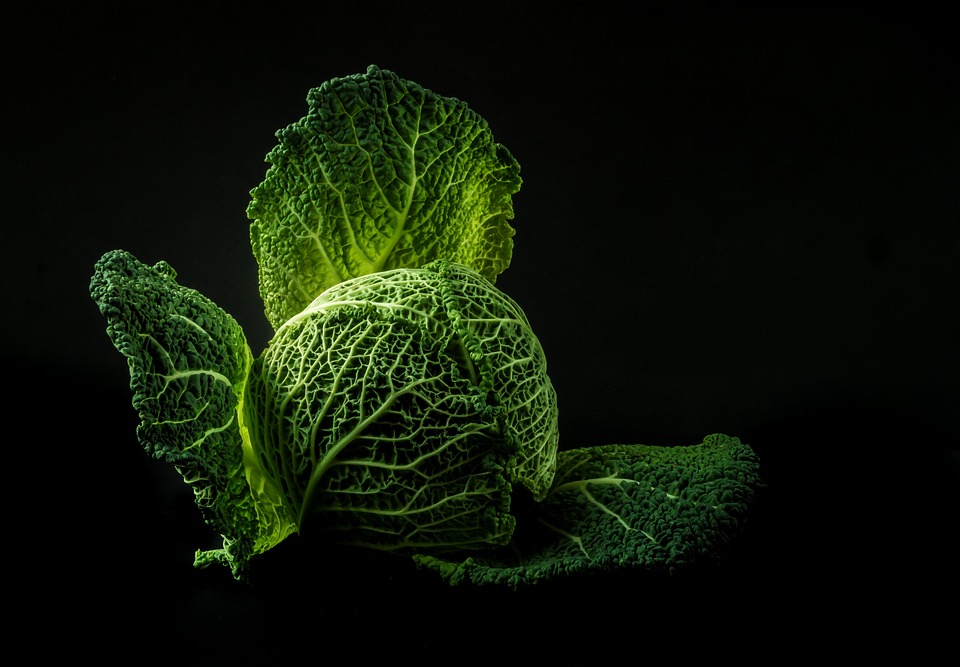gastric sleeve Scars: Healing and Recovery
Introduction
Gastric sleeve surgery, also known as sleeve gastrectomy, is a weight loss procedure that involves removing a portion of the stomach to create a smaller, banana-shaped stomach pouch. This surgery helps individuals struggling with obesity to achieve significant weight loss and improve their overall health. While the benefits of gastric sleeve surgery are undeniable, one concern that many patients have is the presence of scars after the procedure. In this article, we will explore the healing process of gastric sleeve scars and provide tips for their proper care and management.
The Healing Process of Gastric Sleeve Scars
After undergoing gastric sleeve surgery, patients can expect to have scars as a result of the incisions made during the procedure. These scars usually appear near the belly button, as well as in other areas where the surgeon inserted instruments to perform the surgery. The healing process of gastric sleeve scars typically follows a similar pattern to other surgical scars.
Initially, the scars will be red, raised, and may feel firm or itchy. This is a normal part of the healing process and is known as the inflammatory phase. During this phase, the body is working to repair the damaged tissue by producing collagen, a protein that gives structure to the skin. Over time, the scars will gradually fade, become flatter, and may even become less noticeable.
Tips for Scar Care and Management
While gastric sleeve scars will naturally heal over time, there are several steps you can take to promote proper healing and minimize their appearance. Here are some tips for scar care and management:
1. Keep the incision sites clean: Proper hygiene is crucial in preventing infections and promoting faster healing. Clean the incision sites gently with mild soap and water, pat them dry, and avoid scrubbing or using harsh chemicals.
2. Moisturize the scars: Applying a gentle, non-irritating moisturizer can help keep the scars hydrated and reduce itchiness. Look for moisturizers containing ingredients such as aloe vera or vitamin E, known for their skin-nourishing properties.
3. Protect the scars from the sun: Exposure to sunlight can darken scars and make them more noticeable. Use sunscreen with a high SPF and cover the scars with clothing or a bandage when going outside.
4. Massage the scars: Massaging the scars with gentle circular motions can help break down scar tissue, promote circulation, and improve their appearance. Use a moisturizer or silicone gel to make the massage smoother.
5. Consider scar treatments: In some cases, additional scar treatments may be beneficial to further improve the appearance of gastric sleeve scars. These treatments can range from topical creams and gels to laser therapy or silicone sheets. Consult with your surgeon or dermatologist to determine the best treatment option for you.
The Emotional Aspect of Gastric Sleeve Scars
Beyond the physical healing, it is important to acknowledge the emotional aspect of having scars after gastric sleeve surgery. Scars can serve as a reminder of the journey towards weight loss and improved health, but they can also evoke mixed emotions.
It is essential to remember that scars are a testament to your strength and determination in taking control of your health. Embrace your scars as a symbol of your progress and transformation. Surround yourself with a supportive network of friends, family, and fellow gastric sleeve patients who can share their own experiences and provide encouragement.
Conclusion
Gastric sleeve surgery offers life-changing benefits for individuals struggling with obesity. While the presence of scars is a normal part of the surgical process, there are steps you can take to promote their healing and minimize their appearance. Proper scar care, including cleanliness, moisturization, sun protection, massage, and potential scar treatments, can contribute to the overall healing process.
Remember, scars are not just physical marks but also a reflection of your journey towards a healthier and happier life. Embrace them as a symbol of your strength and transformation, and surround yourself with a supportive community that understands and supports your experience.
Frequently Requested Questions Regarding Gastric Sleeve Scars Healed
1. What is gastric sleeve surgery and how does it lead to scars?
Gastric sleeve surgery, also known as sleeve gastrectomy, is a weight loss procedure that involves removing a portion of the stomach to create a smaller, sleeve-shaped stomach. This surgery is usually performed laparoscopically, using small incisions on the abdomen. As with any surgical procedure, gastric sleeve surgery can lead to scars as a result of the incisions made during the operation.
Important information:
1. Gastric sleeve surgery is a weight loss procedure that involves removing a portion of the stomach.
2. The surgery is typically performed laparoscopically, using small incisions on the abdomen.
3. Scarring is a common occurrence after gastric sleeve surgery due to the incisions made during the operation.
2. How long does it take for gastric sleeve scars to heal?
The healing process of gastric sleeve scars can vary from person to person. Generally, it takes about 6-12 months for the scars to fully heal and fade. However, individual factors such as age, overall health, and the body’s natural healing ability can influence the duration of the healing process.
Important information:
1. The healing process of gastric sleeve scars typically takes 6-12 months.
2. Individual factors such as age and overall health can affect the healing duration.
3. The body’s natural healing ability also plays a role in how long the scars take to heal.
3. What can be done to minimize the appearance of gastric sleeve scars?
There are several measures you can take to minimize the appearance of gastric sleeve scars:
1. Proper wound care: Follow your surgeon’s instructions for cleaning and caring for the incision sites to promote optimal healing.
2. Avoid sun exposure: Protect the scars from direct sunlight for at least 6-12 months following the surgery to prevent hyperpigmentation.
3. Use scar treatments: Consider using over-the-counter scar creams, silicone sheets, or other prescribed treatments to help reduce the visibility of scars.
Important information:
1. Following proper wound care instructions is essential for minimizing the appearance of gastric sleeve scars.
2. Protecting the scars from sun exposure is crucial to prevent hyperpigmentation.
3. Using scar treatments, such as creams or silicone sheets, can aid in reducing the visibility of the scars.
4. Are gastric sleeve scars permanent?
Gastric sleeve scars, like any surgical scars, are permanent. However, they tend to fade and become less noticeable over time. Initially, the scars may appear red, raised, or thickened, but as the healing process progresses, they usually become flatter, lighter in color, and blend in with the surrounding skin.
Important information:
1. Gastric sleeve scars are permanent, but they become less noticeable over time.
2. Initially, the scars may appear red, raised, or thickened.
3. As the healing process progresses, the scars usually become flatter, lighter in color, and blend with the surrounding skin.
5. Can gastric sleeve scars cause any complications or health issues?
While gastric sleeve scars themselves do not typically cause complications or health issues, it is essential to monitor them for any signs of infection or abnormal healing. If you notice any redness, swelling, excessive pain, discharge, or other concerning symptoms at the incision sites, it is crucial to contact your healthcare provider promptly.
Important information:
1. Gastric sleeve scars do not usually cause complications or health issues.
2. However, it is important to monitor the scars for signs of infection or abnormal healing.
3. Contact your healthcare provider if you notice any concerning symptoms at the incision sites.
1. Gastric sleeve scars are large and highly visible
Contrary to popular belief, gastric sleeve scars are typically small and discreet. Due to advancements in surgical techniques, incisions made during the gastric sleeve procedure are usually small, ranging from 1 to 2 centimeters in length. Surgeons strive to place these incisions strategically, often in less visible areas such as the abdomen’s natural creases or within the belly button, helping to make scars less noticeable. In most cases, these scars will fade over time, becoming barely perceptible.
2. Gastric sleeve scars are always painful and uncomfortable
While it is normal to experience some discomfort and pain after any surgical procedure, it is a misconception that gastric sleeve scars are always painful. Modern surgical techniques, such as laparoscopic surgery, minimize tissue trauma and promote faster healing, reducing post-operative pain. Additionally, medical advancements have led to improved pain management protocols, allowing patients to better control any discomfort they may experience. Most patients find that any initial pain or discomfort associated with their gastric sleeve scars subsides within a few weeks, and the scars themselves should not cause ongoing pain or discomfort.
3. Gastric sleeve scars cannot be minimized or treated
Another common misconception is that gastric sleeve scars cannot be minimized or treated. In reality, there are various options available to help reduce the appearance of scars resulting from gastric sleeve surgery. These include the use of silicone scar sheets or gels, which can be applied to the scar and help soften and flatten its appearance. Additionally, certain cosmetic procedures, such as laser therapy or microneedling, can stimulate collagen production and improve the overall texture and appearance of the scar. It is important to consult with a medical professional to determine the most appropriate scar treatment options for individual cases.
4. Gastric sleeve scars will prevent wearing certain clothing
Many people mistakenly believe that gastric sleeve scars will restrict their clothing choices, particularly when it comes to wearing revealing or tight-fitting garments. However, with proper scar care and healing, gastric sleeve scars should not significantly limit clothing options. As scars fade and become less noticeable over time, they are unlikely to affect a person’s ability to wear a variety of clothing styles. Additionally, there are various undergarments and shapewear available that can provide additional coverage or support for those who prefer it.
5. Gastric sleeve scars indicate a failed weight loss journey
One of the most damaging misconceptions about gastric sleeve scars is that they indicate a failed weight loss journey. This is entirely untrue. Gastric sleeve surgery is a tool to aid weight loss, and the presence of scars does not reflect the success or failure of an individual’s weight loss journey. The healing of scars is a natural part of the body’s recovery process after surgery, and they should not be seen as a negative outcome. The ultimate success of weight loss after gastric sleeve surgery depends on various factors, including lifestyle changes, adherence to dietary guidelines, and overall commitment to a healthier lifestyle.
Gastric Sleeve Scars Healed
#undergoing #gastric #sleeve #surgery #scars #healing #process #Initially #scars #red #raised #slightly #swollen #time #scars #gradually #fade #noticeable

